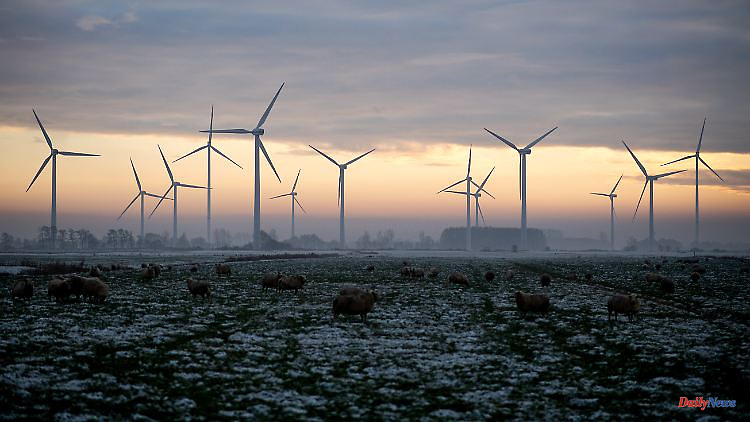This year, more than 1000 new wind turbines can be approved in Germany. Federal Minister of Economics Habeck sees this number as proof that the measures he is implementing with Federal Minister of Transport Wissing are working. However, both are not there yet.
Federal Economics Minister Robert Habeck says he is "very satisfied" with the new onshore wind turbines approved this year, after additional areas near rotary radio beacons had previously been approved. Permissions for the installation of onshore wind turbines with a capacity of four to five gigawatts (GW) were granted this year. This additional area for wind energy was primarily made available by halving the distances for system protection from rotating radio beacons from the previous 15 to now 7 kilometers.
"This is a significant increase, which can then probably be built in 2023," said Habeck after the Federal Cabinet approved a balance sheet report on radio navigation. "These measures are really moving us forward." The federal government is planning to accelerate the expansion path and the tender volumes for onshore wind energy to a level of ten gigawatts per year.
According to this, more than 1000 new wind turbines, each with four to five megawatts per new turbine, have been approved this year due to the halving of the distances for the system protection of rotating radio beacons. According to Habeck, the total of five gigawatts of electricity generated could roughly cover the annual consumption of the city of Berlin. "This is an important push for the expansion of wind energy on land," said the minister at a joint press conference with Federal Transport Minister Volker Wissing.
Wissing emphasized that in addition to the provision of more space, the administrative effort involved in approving new facilities has also been reduced. "This procedure is a blueprint for many other areas where outdated regulations prevent us from using all resources," says Wissing.
In April, Habeck, Wissing and Deutsche Flugsicherung GmbH agreed on a package of nine measures to improve the compatibility of onshore wind energy and radio navigation systems. In 2022 alone, according to the Ministry of Economic Affairs, the Federal Supervisory Office for Air Traffic Control approved all 41 applications for the construction of a total of 119 wind turbines in the protection areas of rotary radio beacons.












